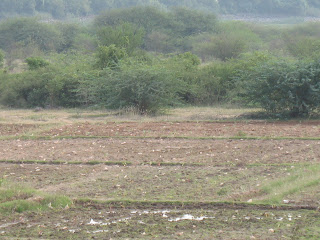The 7 acre farm in front of my house used to cultivate multiple rice crops throughout the year. Interesting to see that they have now planted Eucalyptus saplings throughout their land. There are numerous Eucalyptus plantations in Tiruvannamalai District, a number of which are located close to Arunachala. The Eucalyptus Tree which is indigenous (with a few exceptions) to Australia and Tasmania, has now been introduced throughout the world. Thinking of all the blights caused by the introduction of non-indigenous crops and animals made me wonder whether “Is local best”.
It seems that this is indeed a relevant question considering an ongoing insect threat which now exists in India caused by an insect pest which came in with the Eucalyptus Tree.
To read of problems in the U.S. go to ‘Letter to Federal Agencies Requests Investigation Concerning Public Health & Environmental Risks of Cryptococcus gatti’. The letter in part discusses “Cases of C. gattii disease have been increasing in number and also spreading geographically, along with the introduction of Eucalyptus species worldwide. C. gattii has been isolated from Eucalyptus trees in India, Spain, Colombia, Brazil, Paraguay, Africa, USA (California), Mexico and Southeast Asia”

In some parts of South India farmers are being encouraged to abandoned their traditional farms and specialise in extensive tree plantations. In this respect, environmentalists and international justice groups are voicing their concerns over proliferating tree plantations, as developing countries try to profit from a growing carbon trade. The India Tobacco Company claims to have stepped into the carbon sinks business in order to benefit village communities. For an interesting article on this subject which questions "Who really profits?" read: Indian tobacco giant turns carbon philanthropist
The next Arunachala Grace News, which will be sent out at the end of this month, has an article on the Eucalyptus and the many beneficial properties of the tree and its leaves. If you are not yet a subscriber, you can sign up (at the subscribe facility on the left margin of this site) for a free monthly Arunachala Grace newsletter sent direct to your inbox.


No comments:
Post a Comment